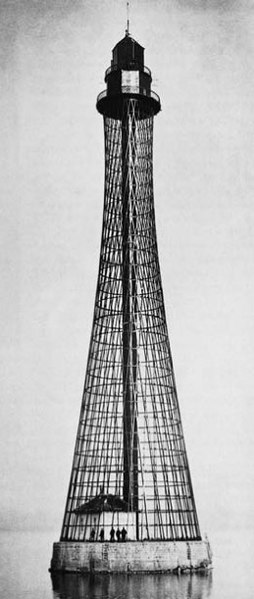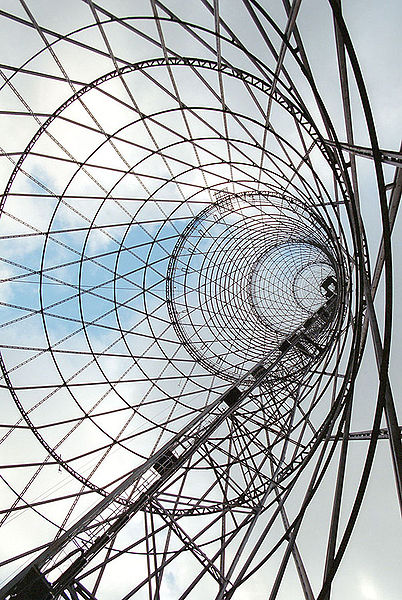Hyperboloid structures are architectural structures designed using a hyperboloid in one sheet. Often these are tall structures, such as towers, where the hyperboloid geometry's structural strength is used to support an object high above the ground. Hyperboloid geometry is often used for decorative effect as well as structural economy. The first hyperboloid structures were built by Russian engineer Vladimir Shukhov (1853–1939), including the Shukhov Tower in Polibino, Dankovsky District, Lipetsk Oblast, Russia.
Shukhov Tower, a lattice 37-meter water tower by Vladimir Shukhov. All-Russian Exposition, Nizhny Novgorod, Russia, 1896
Hyperboloid lattice Adziogol Lighthouse by V.G. Shukhov near Kherson, Ukraine, 1911
The gridshell of Shukhov Tower in Moscow.
Hyperboloid tower in Kōbe, Japan.
In geometry, a hyperboloid of revolution, sometimes called a circular hyperboloid, is the surface generated by rotating a hyperbola around one of its principal axes. A hyperboloid is the surface obtained from a hyperboloid of revolution by deforming it by means of directional scalings, or more generally, of an affine transformation.
The Adziogol Lighthouse, Ukraine, 1911.
The first 1916 patented Van Iterson cooling tower of DSM Emma in Heerlen, The Netherlands, 1918
Kobe Port Tower, Japan, 1963.
Saint Louis Science Center's James S. McDonnell Planetarium, St. Louis, Missouri, 1963.






